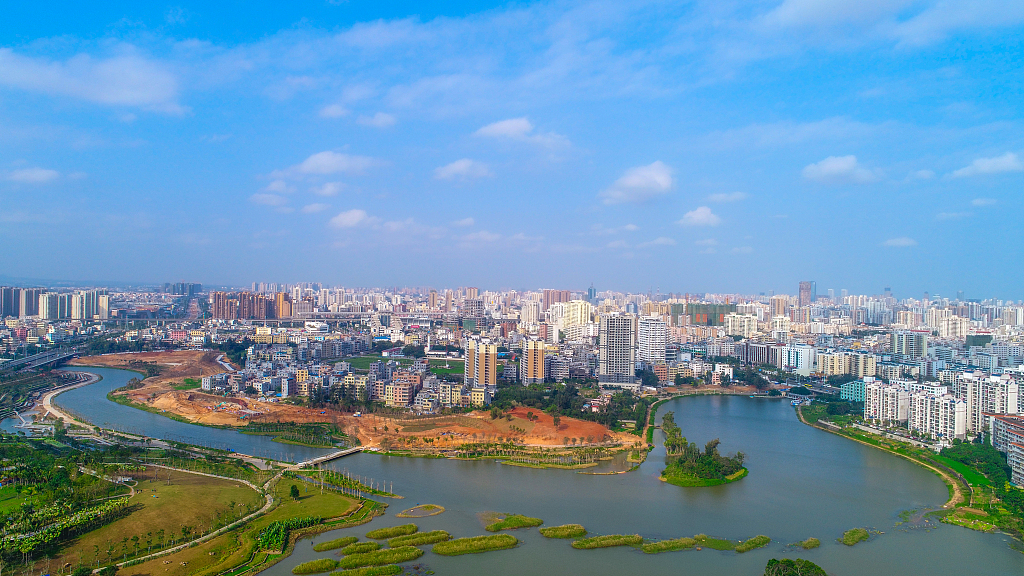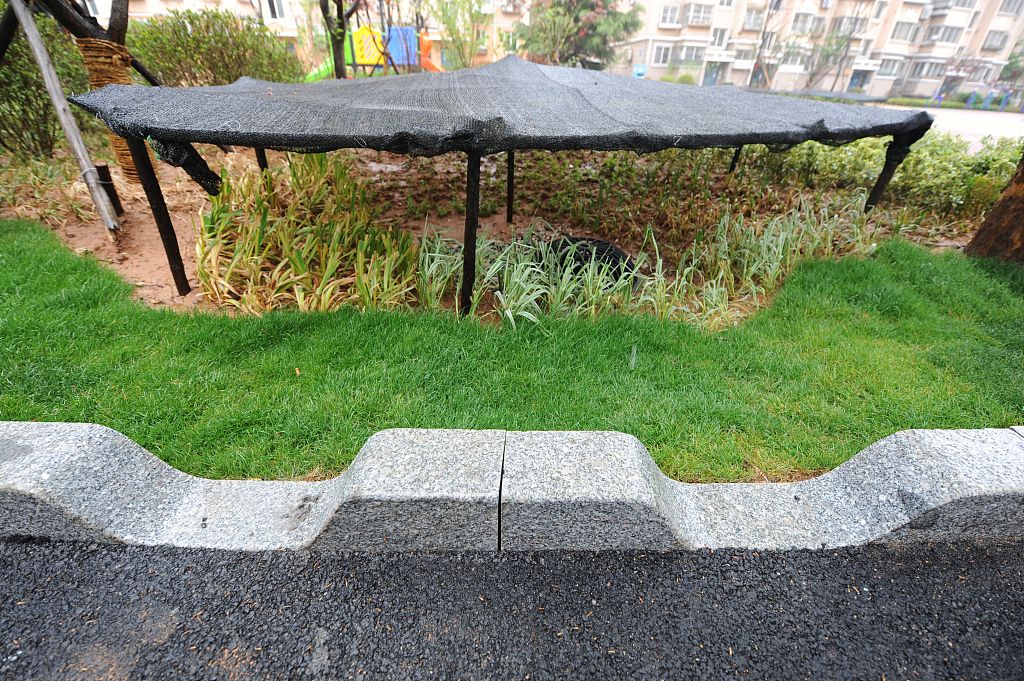
(File photo: VCG)
Rainfall and stagnant water at junctions have been a problem in the control of urban waterlogging in Shanghai. In order to solve these problems and effectively eliminate the hidden dangers behind them, a prefabricated "one-on-one" unattended pumping station was installed for the first time at Jiasong Middle Road. Based on the design concept of the “integrated” pumping station, the entire pumping station is built underground and completely hidden amongst the surrounding green environment.
Such a design is a reflection of Shanghai’s effort to promote sponge city construction, according to China Sponge City Construction White Paper issued in 2018. The sponge city is a system which is flexible with environmental changes and natural disasters, the document said, it has the capacity to reduce the damage to original natural hydrological features and water ecological environment caused by urban construction.

The open road along the central square of the Licang Huatai Community in Qingdao. Stagnant water can automatically flow to the overflow well for greening. (File photo: VCG)
To standardize the evaluation of a sponge city, the Ministry of Housing and Urban-Rural Development has recently issued an Evaluation Standard of Sponge City Construction and will be implemented on August 1, 2019.
Before the implementation of the standard, several areas have been part of the experimental project since 2015, according to the Whiter Paper. By 2017, China has involved 30 cities into the national experimental list. Tianjin, for example, is one of the driest cities in China. Water shortages put pressure on the agriculture and industry sectors in Tianjin. How to recycle existing water resources more effectively is the key strategy for Tianjin to establish a long-term effective water supply guarantee mechanism. Sino-Singapore Tianjin Eco-city, an area co-constructed by China’s government and Singapore’s government, aims to learn from Singapore’s experience in water resource management. Rain water collection and recycling is the highlight of its strategy, and is maintained through green infrastructure to help gather rain water and relieve the water crisis in Tianjin, according to the white paper.

(File photo: VCG)
The document-Evaluation Standard of Sponge City Construction is a milestone in standardizing sponge city construction. The document gives clear definitions to the purpose of sponge city construction, all these cities can apply these standards to local features to implement specific sponge city plans. Take these southern cities for example, the common problem among them is water pollution, according to the white paper. The different assessment aspects such as source reduction, process control, and system governance in the document gives these cities guidance to solve their problems through sponge city construction, noted by the Evaluation Standard of Sponge City Construction.


